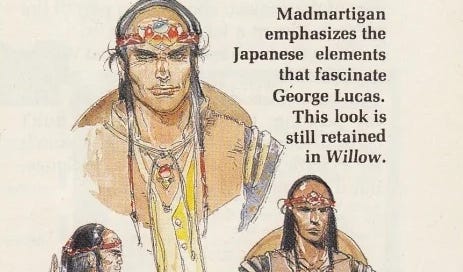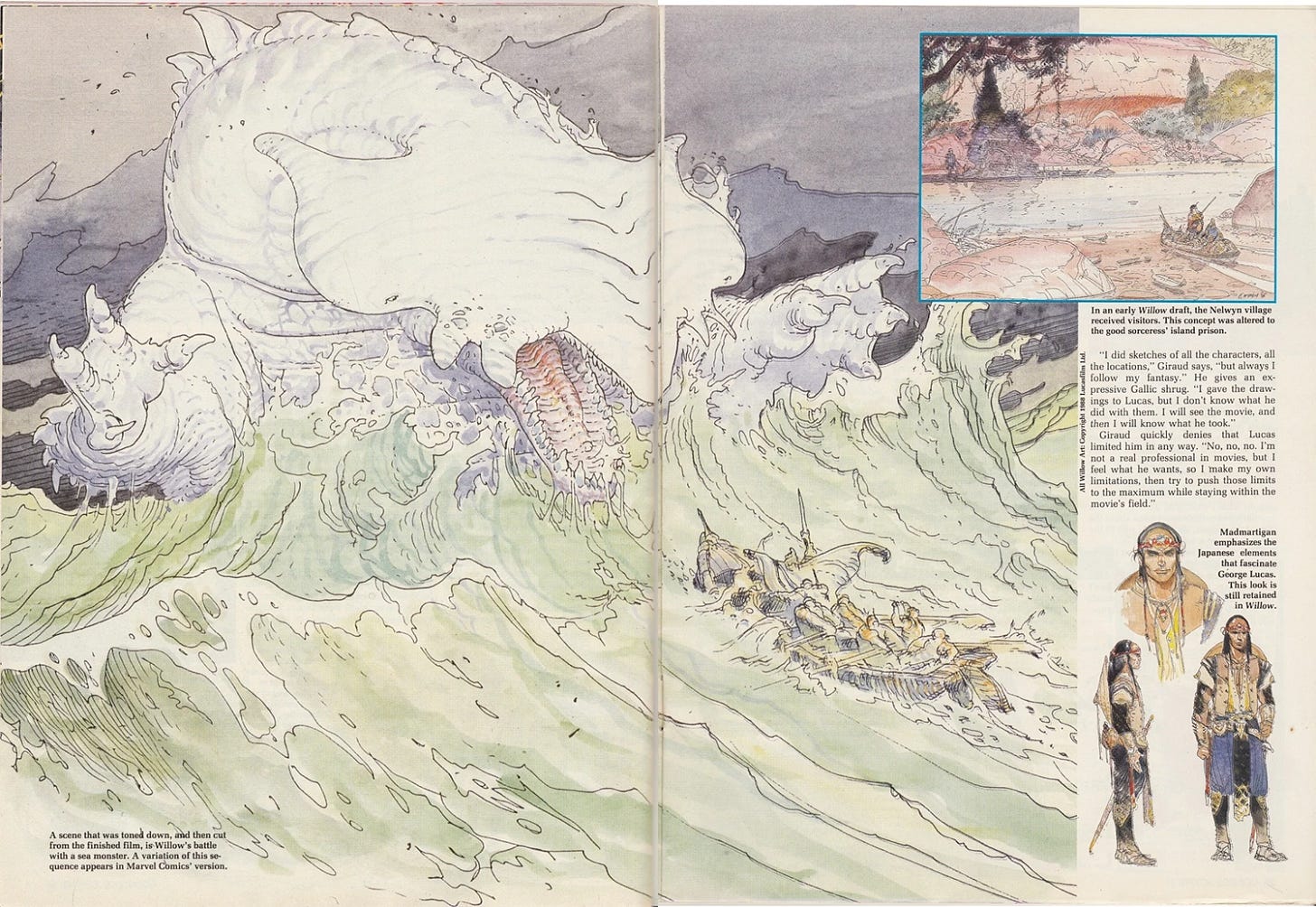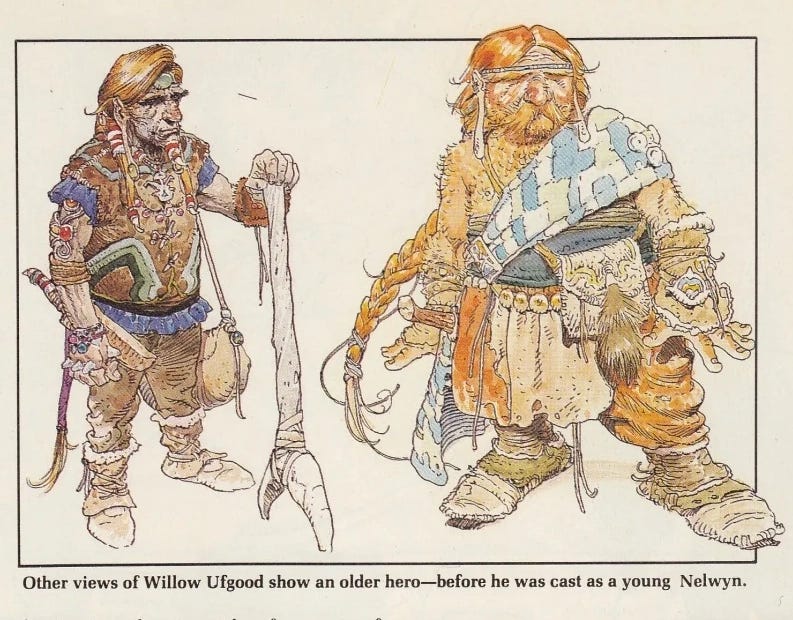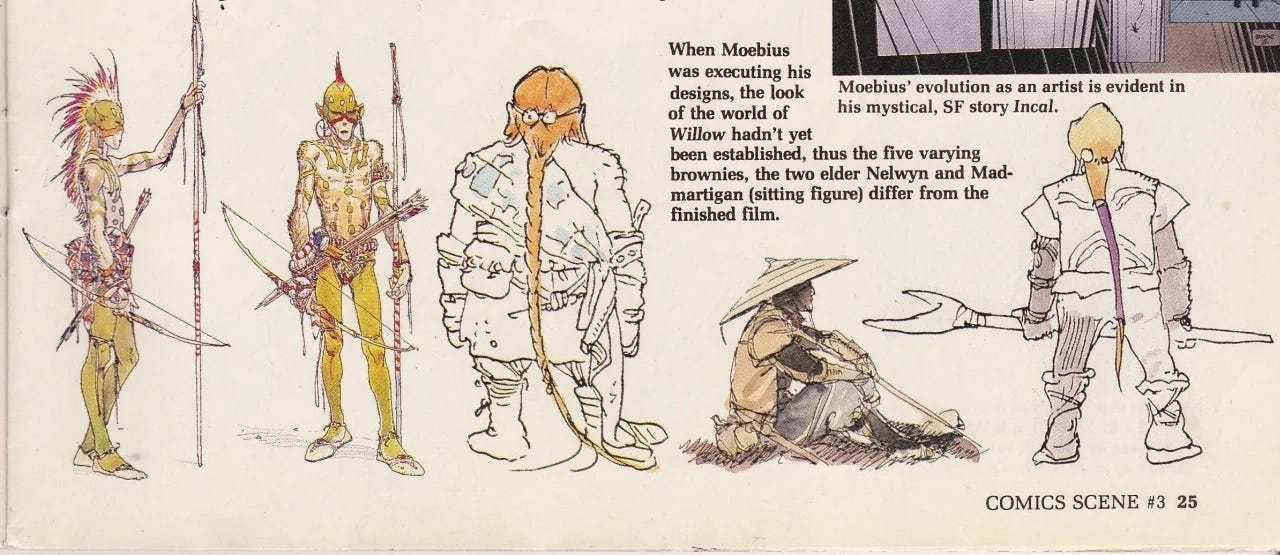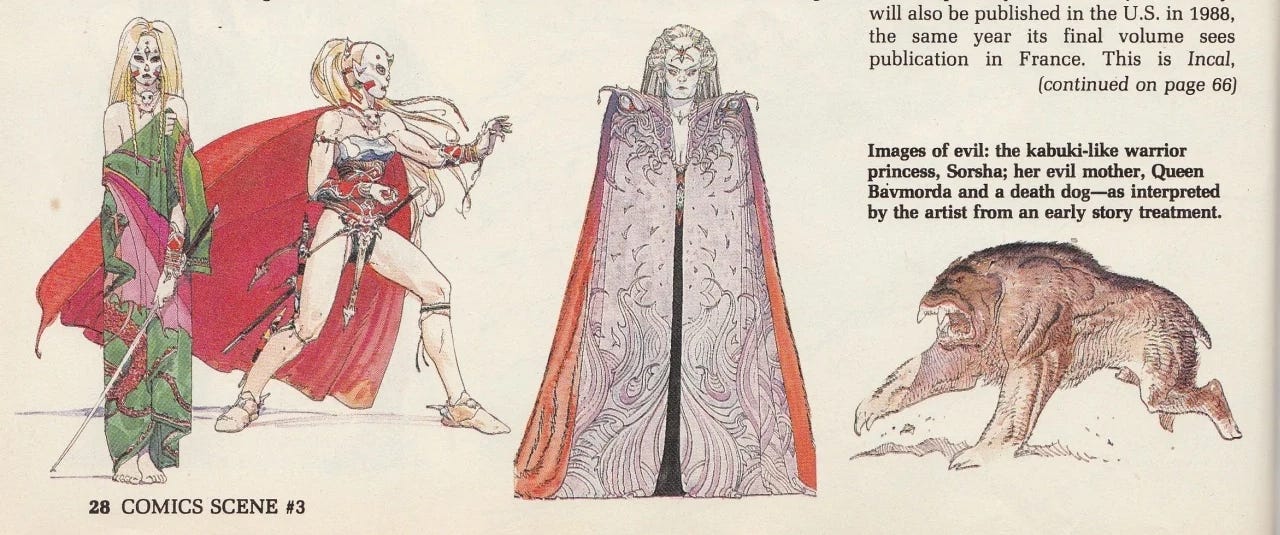Hey y’all,
Top Secret. Real Genius. Top Gun. Tombstone. Batman. Willow. True Romance. Heat. Kiss Kiss Bang Bang. The list goes on, and on, and on.
Val Kilmer never met a role he didn’t own or a movie he couldn’t steal.
And so hopefully the hasty little tribute piece above does communicate my fondness for his work. Because I will need any latitude it grants me as I veer us sharply away from the excellence of his acting career and instead limbo us low, beneath far dustier ceilings.
The film analysis will (mostly) have to wait. As today, I want to talk about how the dearly departed Mr. Kilmer’s turn as the oh-so-charming Madmartigan in 1998’s (far less charming) WILLOW led me to discover the art of a comics legend.
Well, sorta…
For as niche as comics remain today, if you’d have shown the child I was a vision of what they have become he’d doubtlessly have wondered who put the mind control into the tap water.
In the mid-1980s, pre-Image comics boom, the shadowy hotel room conventions, and hole-in-the-ground shops were a perfect match for their near exclusive demographic— Middle aged men, who tended to hop from shadow to shadow like a game of Vampire Frogger. They were gatekeepers. Dungeon Masters who kept their comics knowledge bagged, boarded, and cataloged by secret codex.
Venturing into those spaces as a kid looking to buy comics was lonesome, yes. But seeking a path to actually making comics?— THAT was climbing free solo up a sheer rock face, freshly slicked by the acrid rain of mountain goat piss.
Fortunately enough for me, the flip side of braving such a cloistered culture of opinions was that many of them felt theirs were worthy of charging for.
And so in those times before the internet, there existed an interconnected web of print discourse. A steady stream of published newsletters, fanzines, and as it pertains to this story—
COMICS SCENE MAGAZINE.
Not to be confused (though I have always confused it) with COMIX SCENE MAGAZINE which was published by Jim Steranko in the 1970s— COMICS SCENE was published by STAR LOG and if memory serves, was mostly available amidst the scattered randomness of comics that you could still find on newsstands.
And though I can’t tell you if it was a particularly well-made journalistic endeavor, I can say that as far as the development of my personal understanding of how comics worked behind the scenes— it was nearly invaluable. I also suppose that it was THE publication that first made me believe that the comics I loved so dearly would come to see bigger onscreen lives as movies. Broader audiences I desperately wanted to exist, so that we could share comics.
So as you can imagine, flipping 1988’s COMICS SCENE #3 is more than a little like receiving my ancestry results from a DNA test.
A feature on Walt Simonson’s X-FACTOR.
An article on the Tim Burton BATMAN film casting.
A look at ECLIPSE comics.
Jerry Ordway paintings of Christopher Reeve as Superman.
First Comics. Grendel. ALIENS comics in zip-a-tone.
Now, if COMICS SCENE had any real strengths I would list their eagerness to showcase art. Their just off-center of mainstream bent. And perhaps most importantly— their willingness to use their burgeoning movie coverage as a bridge to articles about actual comics and comics creators.
And so, keeping to that form, this issue features a series of articles at least ostensibly about the George Lucas produced, Val Kilmer headlined fantasy blockbuster WILLOW. First, a rather ho-hum look at the comics adaptation.
And then with a turn of the page—
Atoms were split.
Suddenly, up was down. Down was out. Fish flew like pigs, and cats pushed dogs in baby carriages. I had been hurdled into the pages of my own personal Dan Brown novel. I was a pre-pubescent Nick Cage on the hunt for the Declaration of Independence.
What the fuck was actually happening there on those pages was a mystery that my young mind could not unravel.
That was not my father’s Madmartigan.
No Willow I’d ever know.
How could THIS version exist in the same universe?
How could they have someone draw shit that looked THAT cool and then dared NOT to use it?!
Prison was too good for these people.
Heads needed to roll.
Having re-watched WILLOW not too terribly long ago, I can now say with my whole chest, that it never stood a chance of living up to those drawings.
And that is not to say that it’s totally without charm. It is an ambitious, but ultimately kind of flat, generic, popcorn flick. Elevated somewhat by the ILM effects, the earnestness of Warwick Davis, and of course Kilmer. Who’s Madmartigan romps and rolls around the screen like a half-drunk Ronin Samurai. Compensating for whatever design compromises were made by embodying the spirit of Moebius’s line.
Of course looking back on it now, with a lot more knowledge of what it takes to translate something from page to screen— I actually think they did a solid enough job of making those Möbius designs practical. It’s just that, be you eleven or eleven hundred years old, you can’t unsee designs like THIS:
And so that is how Val Kilmer by way of WILLOW and COMICS SCENE MAGAZINE opened my eyes to Moebius. As my first encounters with European comics legends go, it remains unbeaten.
As mammoth as that Japanese wave of a monster.
Subsequent COMICS SCENES would introduce me to Moebius’s Western, sci-fi, and SILVER SURFER comics. The latter of which I have bought dozens of times in dozens of forms. Of course, he would go on to do more film design work. So if you’re unfamiliar I recommend looking up his ALIEN, MASTERS OF THE UNIVERSE, and TRON art. And y’know, I hear tell his comics are pretty groovy too.
As for the time-flung, pre-teen comics fan I was? Well…
Having learned that employment designing movies was REALLY possible, I headed straight to the kitchen table and began the work of re-designing all of STAR WARS for practice. Combo lightsaber-cybernetic hand for Luke. Robo spider limbs and tank treads for Jabba. A punk mohawk for Leia.
But I tell you, sitting here now, knowing what I know given the passage of time—
I’m not sure any of those will hold up when I make the movie.
Okay, enough of my jibba-jabba. Thanks for reading.
More soon,
-j

